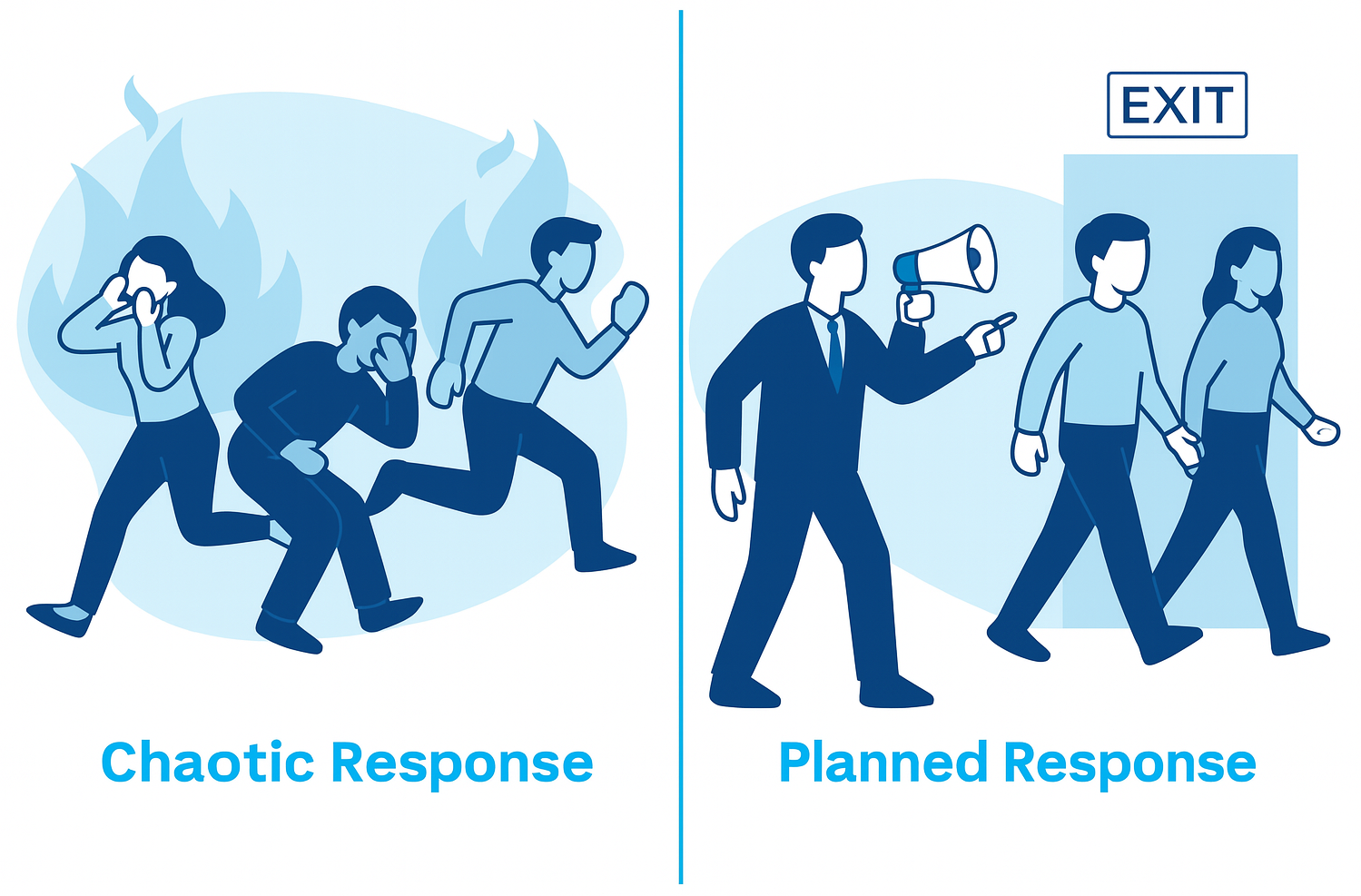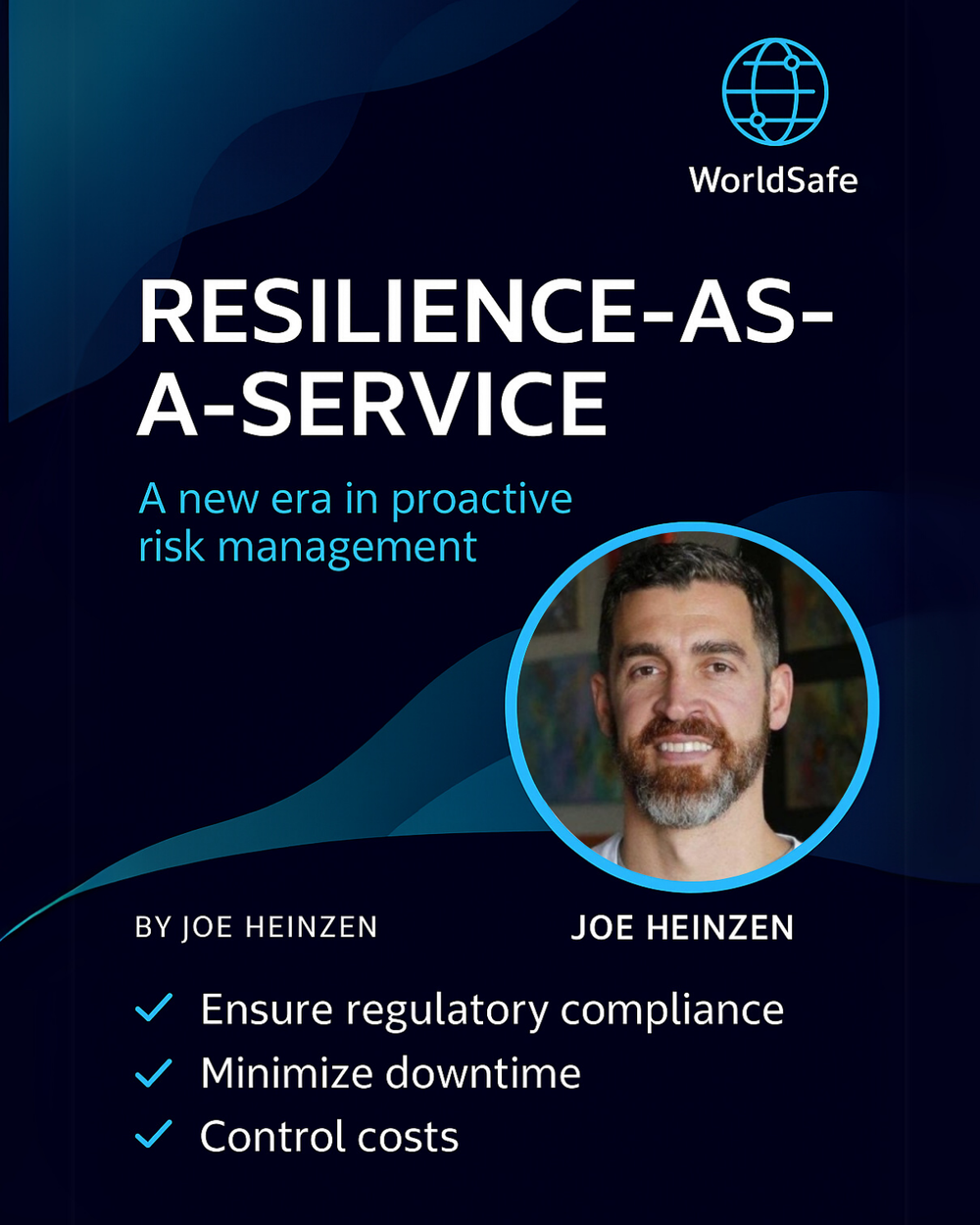Resilience-as-a-Service: A Groundbreaking Approach to Security Compliance and Risk Mitigation
The Urgency of Resilience in 2025 In today’s volatile environment, physical and operational security can no longer be treated as a checkbox...
1 min read
Joe Heinzen : July 10, 2025

If you think resilience is just a buzzword tossed around after a crisis, think again. Resilience is the muscle your company needs - not just to survive, but to thrive.
And here’s the kicker: the most resilient companies aren’t just safer, they’re healthier and more profitable, too.
Imagine your company is a ship. Resiliency is your crew’s ability to handle rough seas, unexpected storms, and mechanical failures, and still reach port safely.
Companies that invest in building resilience through strong safety practices, training, clear communication, and flexible plans, reduce downtime, improve employee engagement, and prevent costly disasters.
Research backs this up: companies with resilient cultures are 2.5 times more likely to outperform their competitors financially. That’s not luck. That’s preparation.
Here’s where the rubber meets the road:
Faster recovery from incidents: Downtime kills profits. Resilient teams bounce back quicker, minimizing disruption.
Higher employee retention: People want to work where they feel safe and valued. Resilience breeds loyalty.
Stronger customer trust: Customers notice when you handle challenges well. Resilient companies keep their reputations intact.
Better compliance and fewer fines: Proactive risk management keeps regulators happy and reduces penalties.
Crises can cost money—it’s how much money do we leave [behind] because we have to stop business: money that we lose from lawsuits, money that we lose from reputational effects.
Lynn Perry Wooten, president of Simmons University, Co-Author, The Prepared Leader.
Policies and checklists matter, but culture is what makes them work.
A culture of resiliency means employees don’t just follow safety rules, they own them. They know what to do when things go sideways because they’ve practiced, trained, and talked through scenarios.
This mindset shift - from reactive to proactive - turns safety from a cost center into a business driver.
Over the years, working with organizations across healthcare, education, and manufacturing, I’ve seen firsthand how a resilient culture changes everything. Not just after a crisis, but every single day.
Leaders who prioritize resilience create environments where innovation thrives because their people aren’t spending energy worrying about “what ifs.” They’re focused on what’s next.
If you want to boost your company’s bottom line, start by investing in resilience. It’s not just about avoiding disaster—it’s about building a business that’s agile, confident, and ready for whatever comes next.
Because when you build resilience, you don’t just protect your company—you empower it.

The Urgency of Resilience in 2025 In today’s volatile environment, physical and operational security can no longer be treated as a checkbox...

February 24, 2025 - In today’s increasingly unpredictable world, organizations must proactively ensure they are prepared for emergencies while...

When most folks hear “security assessment,” they think, “Great, another expense to check off the list.” But here’s the thing: if you treat it like a...